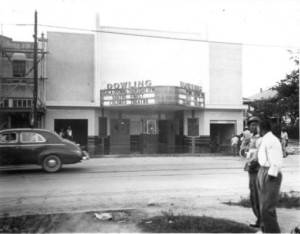Newly Found Letters Show How Texas Longhorns Delayed Integration
Photo: The University of Texas football program has a storied history. (Ronald Martinez/Getty Images)
(WBUR) Asher Price was one of approximately 97,000 fans in the stadium when the University of Texas played Kansas in October of last year.
“The crowd was overflowing with burnt orange and white T-shirts,” Asher says. “And people were holding aloft their ‘Hook ’em Horns.’ “
That’s to say, it was pretty much your average home football game at UT … until halftime.
“The 1969 National Championship University of Texas Longhorn football team was recognized on the field,” (Price) says. “The band was serenading them. The crowd was cheering them on.”
And it just happens that, because of the policies of the University of Texas in the 1950s through the 1960s, even after integration, this group of men happened to be all white. The 1969 national championship University of Texas Longhorn football team was the last all-white team to win the national championship.
“To me, in the stands, that was troubling,” Price said. “You know, the University of Texas has a complicated relationship with its past. In some ways, it’s been taking it head on. It’s in recent years removed Confederate memorials from campus. But it remains a touchy subject at the University of Texas about how to handle these issues.”
And this scene was especially troubling to Price because, over the past few years, he’s been researching and writing a book about Earl Campbell, an African American running back who played for the Longhorns in the mid-to-late ’70s, not long after the University of Texas finally integrated their football team. As part of his research, (Price) requested boxes of documents from the University of Texas off-site archive.
Price: “And you start looking through the boxes, and there are folders that say things like “Negroes,” “Negroes in colleges.” And you start going through these documents and they’re — they’re shocking. They spell out the the very deliberative, bureaucratic way that people in power at the University of Texas, after the Brown vs. Board of Education decision in 1954, how they tried to prevent black students from enrolling at the University of Texas, and then how to keep them from being graduate teaching assistants, how to keep them off the football team.” (more)
Emancipation Avenue — Texas Main Street Program
(Texas Historical Commission) Dr. Assata Richards, the Emancipation Economic Development Council’s (EEDC) board president, truly represented the community at the 2019 First Lady’s Main Street Tour welcoming Houston’s Emancipation Avenue to the program.
After encouraging attendees to support surrounding Third Ward entrepreneurs and businesses, she noted she was literally backing the community by wearing a dress from area store Melodrama Boutique, glasses from local shop Smith’s Opticians, and accessories from Market Square.
“We all know that small businesses and entrepreneurship are key to revitalization,” Richards said. “My grandparents moved here in the 1950s with a hope in their heart. The Third Ward is a story of resilience, beauty, culture, and tenacity.”
She added, “Fifty years from now, we hope you’ll look back and say ‘You know what? We took a chance on an urban community, and now they’re the poster child for how to revitalize and preserve their neighborhood.’” (more)
Doctor, surgeon, soldier
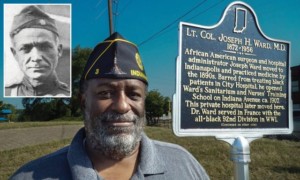
Research by Legionnaire Leon Bates led to a state historical marker commemorating the achievements of World War I veteran Maj. Joseph Ward (top left). (Photo by Matt Grills)
(American Legion Magazine) Genealogists say the most important thing on a headstone is the dash between the date of birth and date of death, for that dash represents the life lived.
At the top of a gentle rise in Indianapolis’ 550-acre Crown Hill Cemetery is the final resting place of Lt. Col. Joseph H. Ward (1872-1956), an African American surgeon, hospital administrator and World War I veteran. Like most military markers, Ward’s offers few clues to his dash – his many accomplishments, in and out of uniform.
I first came across Ward’s name while doing research before returning to college, and came to appreciate his legacy while doing additional dissertation research. I learned that Ward established and operated a hospital for black patients when they were barred from treatment elsewhere. Digging further, I discovered he was a medical trailblazer and early American Legion member whose achievements – decades before the civil-rights movement – have been largely forgotten.
During his lifetime, this first-generation freedman became a successful physician, surgeon, entrepreneur, Army officer, hospital administrator, civic leader, and prominent member and commander of American Legion Post 107 in Indianapolis, all during the height of the Jim Crow era (1896-1954), between Plessy vs. Ferguson and Brown vs. Board of Education. (more)
Save the date, call for presentations! 2020 Aya Symposium at PVAMU
K-12 Texas educators attending the event will receive 7 CPE credits!
 Following on the success of last year’s event, the 2020 Aya Symposium, in association with the Texas Purple Hull Pea Festival, is set for Friday, June 5, at Prairie View A&M University. As last year, the event will be hosted by the Texas Institute for the Preservation of History and Culture located in the School of Architecture.
Following on the success of last year’s event, the 2020 Aya Symposium, in association with the Texas Purple Hull Pea Festival, is set for Friday, June 5, at Prairie View A&M University. As last year, the event will be hosted by the Texas Institute for the Preservation of History and Culture located in the School of Architecture.
This year’s theme is: “Making Us Count: Reclaiming the Texas Freedom Colony Legacies of Activism and Engagement in 2020.”
“Being counted” in 2020 – both on the census roles and in the voting booth – is of generational import. This year’s symposium will guide attendees in exploring the role of Texas freedom colonies – throughout history, and into the present – in “Making Us Count” through, protesting, educating, voting, and other methods of community organizing and civic engagement to insure that the voices of Black Texans are heard.
Call for Presentations
We are looking for dynamic and engaging speakers who have the expertise to enlighten and motivate attendees. For submission guidelines, symposium registration, and other information, please click here. Proposals are due Friday, March 27 and selected presenters will be notified no later than Friday, April 17, 2020.
TIPHC Bookshelf
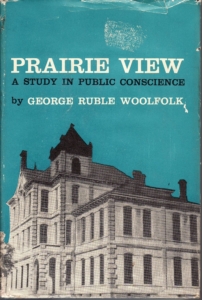 Published scholarship on black history in Texas is growing and we’d like to share with you some suggested readings, both current and past, from some of the preeminent history scholars in Texas and beyond. We invite you to take a look at our bookshelf page – including a featured selection – and check back as the list grows. A different selection will be featured each week. We welcome suggestions and reviews. This week, we offer, “Prairie View, A Study In Public Conscience,” by George Ruble Woolfolk.
Published scholarship on black history in Texas is growing and we’d like to share with you some suggested readings, both current and past, from some of the preeminent history scholars in Texas and beyond. We invite you to take a look at our bookshelf page – including a featured selection – and check back as the list grows. A different selection will be featured each week. We welcome suggestions and reviews. This week, we offer, “Prairie View, A Study In Public Conscience,” by George Ruble Woolfolk.
This digitized edition presents the quintessential history of the university’s founding and early years written by the distinguished former Prairie View professor. Woolfolk, a preeminent historian (southern history and African-American studies) and scholar, served at PVAMU for five decades, beginning in 1943 during which time he was chair of the history department, chair of the Division of Social Science, and was listed in Who’s Who in America and noted as one of the Outstanding Educators of America.
In the book, Woolfolk shows the “impetus for public education in Texas from the state’s founding to the Civil War and the introduction of public education for its Negro citizens as a result of the war and reconstruction.”
He writes, in the preface, “This is a study of the development of higher education for the Negro in Texas under the ideology of the land-grant pattern. Conceived as a part of the revolution implicit in the rise of industrialism to prestige and power in the nation with the coming of the Republican Party to control of the national government in 1860, Justin Morrill’s brain-child has meant many things to many people as it took shape in the nation, and especially in the post-bellum South. The elaboration and evolution of this pattern of education has never been definitely explained. This is particularly true in the case of the Negro’s adaptations, subject as they were to the many dynamic factors and forces attendant upon his adjustment to his status as a free man and the efforts to integrate him into the broad pattern of democracy which the creation of these schools was designed to foster.”
This Week in Texas Black History
Mar. 9
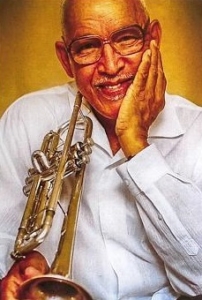
Legendary Motown producer, composer, and musical director Gil Askey was born in Austin on this day in 1925. Askey attended the original Anderson High School and played trumpet in the marching band. At Motown, Askey was musical director for Diana Ross and worked with other artists, including Stevie Wonder, the Jackson Five, Marvin Gaye, and the Four Tops. Askey was considered to be “one of the architects of the legendary Motown sound”. Motown founder Berry Gordy often called Askey “The glue that kept everything together”. Askey was nominated for an Academy Award for his work on the 1972 film “Lady Sings The Blues” based on the life of Billie Holliday.
Mar. 9

On this day in 1930, innovative jazz saxophonist Ornette Coleman was born in Fort Worth. His album “Sound Grammar” received the 2007 Pulitzer Prize for music. By age 14, Coleman had taught himself to play the instrument and read music. In 2007, he also received a Grammy Award for lifetime achievement. In 2009, Coleman received the Miles Davis Award from the Festival International de Jazz de Montréal for his contributions to the evolution jazz.
Mar. 11

Prairie View A&M University opened its doors on this date in 1878 with an enrollment of eight students, all men, for the first state supported college in Texas for African Americans. The school, located 50 miles northwest of Houston, had its beginnings in the Texas Constitution of 1876, which, in separate articles, established an “Agricultural and Mechanical College” and pledged that “Separate schools shall be provided for the white and colored children, and impartial provisions shall be made for both.” Thus, Alta Vista Agricultural and Mechanical College of Texas for Colored Youth was established on August 14, 1876. Prairie View, a land-grant university authorized under the Morrill Acts of 1862 and 1890, is part of the Texas A&M System. (See TIPHC Bookshelf: “Prairie View, A Study In Public Conscience,” by George Ruble Woolfolk.)
Mar. 13
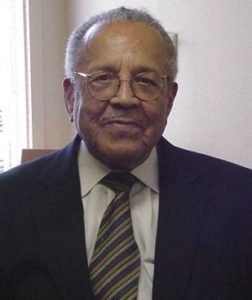
Rev. Claude W. Black passed away on this day in 2009 after serving for 50 years as the pastor of Mt. Zion First Baptist Church in San Antonio, and as a civil rights leader. Black, who was born on Nov. 28, 1916 in San Antonio, was president of the Baptist Ministers Union. The group teamed with the NAACP and CORE to organize and rally people and other leaders to things that needed to be changed, such as public accommodations. He would appear before City Council to try to get ordinances passed, such as equal access to swimming pools or restaurants. The groups wanted to create publicity, using sit-ins and picket lines. Black was instrumental in organizing the desegregation of the restaurants in San Antonio and became a four-term city councilman (1973-1978) and the city’s first black Mayor Pro Tem.
Blog: Ron Goodwin, Ph.D., author, PVAMU history professor
Ron Goodwin is an assistant professor of history at Prairie View A&M University. Even though he was a military “brat,” he still considers San Antonio home. Like his father and brother, Ron joined the U.S. Air Force and while enlisted received his undergraduate degree from Texas Lutheran University in Seguin, Texas. After his honorable discharge, he completed graduate degrees from Texas Southern University. Goodwin’s book, Blacks in Houston, is a pictorial history of Houston’s black community. His most recent book, Remembering the Days of Sorrow, examines the institution of slavery in Texas from the perspective of the New Deal’s Slave Narratives.
Recent Posts
Lessons from Saturday Morning
One of my fondest memories from childhood is Saturday morning cartoons. That was the only time of the week I gladly woke up at 7 a.m. I remember rushing in my pajamas to that big(?) 19” TV to watch Bugs Bunny and Super Friends. Sometimes my mother would sit with me. But I remember not really wanting her watching cartoons with me. Its not that I didn’t enjoy my mother’s company, because I did. (more)
November 2020
So, impeachment has come and gone. Bernie Sanders is still a democratic socialist and no one will let Michael Bloomberg forget “stop and frisk.” The political season is in full bloom and for the next ten months or so we’re going to be inundated with political punditry and opinions about what will happen if…(more)
Submissions wanted
Historians, scholars, students, lend us your…writings. Help us produce the most comprehensive documentation ever undertaken for the African American experience in Texas. We encourage you to contribute items about people, places, events, issues, politics/legislation, sports, entertainment, religion, etc., as general entries or essays. Our documentation is wide-ranging and diverse, and you may research and write about the subject of your interest or, to start, please consult our list of suggested biographical entries and see submission guidelines. However, all topics must be approved by TIPHC editors before beginning your research/writing.
We welcome your questions or comments. Please contact Michael Hurd, Director of TIPHC, at mdhurd@pvamu.edu.

